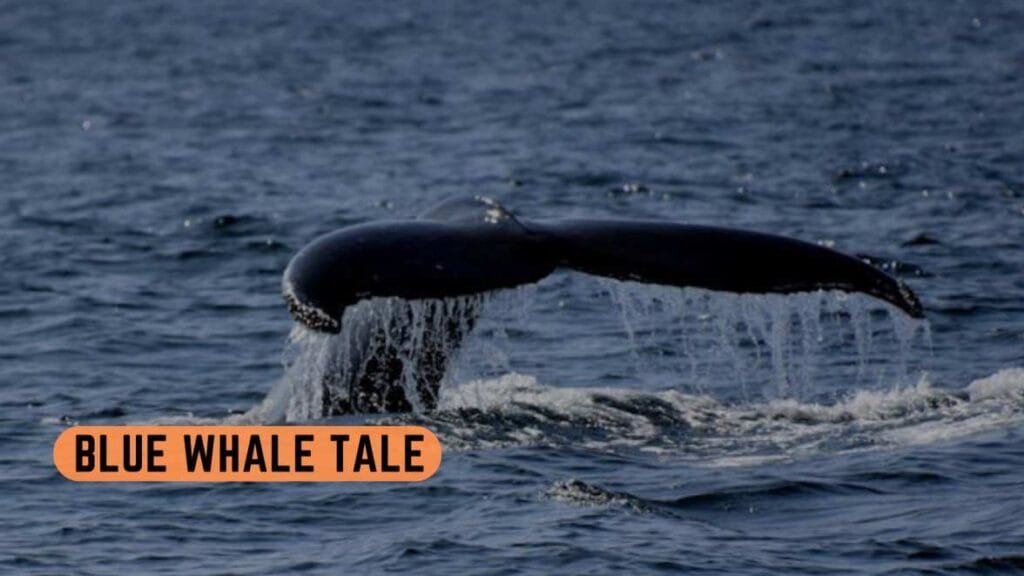Blue whales are the largest animals ever discovered in the world. The blue whale is scientifically known as Balaenoptera musculus.
They are known for their immense size and remarkable presence in the ocean ecosystem. The average weight of a blue whale is approximately 150 tons, which is equivalent to about 33 elephants.
Their long and slender bodies can reach lengths of more than 30 meters (98 feet).
Average Weight of Blue Whale and Length In Feet
The blue whale can weigh up to 199 tonnes and measures 29.9 meters (98 feet) in length.
To put this in perspective, that’s approximately the length of three school buses parked end to end. These majestic creatures are even longer than most of the dinosaurs.
The Appearance Of A Blue Whale
These whales exhibit various shades of grayish-blue dorsally and are somewhat lighter underneath. Their long and slender bodies gracefully navigate the ocean depths.
Heart And Vocalizations Of Blue Whales
The heart of a blue whale has been recorded at nearly 700 kilograms (about 1,500 pounds), which is equivalent to a small car engine inside its massive body.
These whales are the loudest animals on earth, even louder than a jet engine. They are known for their unforgettable beautiful vocalizations.
Their deep, resonant calls range from 8 to 25 Hz and can be heard across vast distances in the ocean.
Fascinating World Of Blue Whale Swimming
Despite their massive size, blue whales are remarkably quick and fast swimmers. They move through the water with a seemingly effortless glide, propelled by their powerful tails.
If you want to know more about it, then watch this video
Tales Slap And Breaching
Blue whales occasionally exhibit playful behaviors. They perform tail slaps, where they raise their tail flukes out of the water and forcefully slap them back down.

This behavior might serve various purposes, such as communication or dislodging parasites. Additionally, blue whales are known for their spectacular breaching—launching their massive bodies out of the water and crashing back down.
Blue Whale Migration, Ocean GPS, Magnetic Magic
These ocean wanderers undertake remarkable migrations. They travel thousands of miles between feeding and breeding grounds.
During their migration, they maintain a steady pace, covering vast distances across oceans. They have an incredible built-in GPS system.
It helps them to know where they are, where they are going and how to get there. Just like you use your phone to find the right path in a new city, they rely on their internal compass.
Blue whales can sense the Earth’s magnetic field, which helps them determine their longitude (how far east or west they are).
Additionally, blue whales pay attention to the stars. By observing constellations, they figure out their latitude. They are incredibly diverse.
They can plunge to incredible depths—up to 1,640 feet (500 meters) or more—in search of food.
Memory Of Blue Whales
Blue whales remember their favorite routes. They have been swimming in the ocean highways for generations. So even in the vastness of the open sea, they follow their familiar paths.
Feeding Habit
Blue whales are filter feeders. They open their huge mouth wide and engulf massive amounts of water filled with tiny krill.
Inside their mouths, their baleen plates act like a strainer, allowing water to escape while trapping the krill.
Baleen plates are specialized structures made of keratin (the same material as human hair and nails). The baleen plates hang from the upper jaw, forming a curtain-like filter.
As the whales push the water out through the baleen, the krill remain trapped. After filtering out the krills, they eat their meal and extract the nutrients they need.
| What are krills? |
|---|
| The name “krill” comes from the Norwegian word krill, which means “small fry of fish”. Krills are small aquatic organisms measuring 1 to 2 centimeters (up to 6 inches). They play a crucial role in marine ecosystems and serve as a primary food source for various animals. They are mostly found in large swarms that contain millions of individuals. |

How many krills can blue whales consume?
Blue whales can consume up to an astonishing four tonnes of krill every day. It helps them to maintain their massive size and energy requirements.
Baby Blue Whale Birth Weight
Baby blue whales are truly remarkable creatures. A baby blue whale is also known as a calf.
The average weight of the baby blue whale is 6000 pounds (approximately 2722 kilograms), that is equivalent to a small car or a hefty pickup truck.

Baby Blue Whale Growth Rate
Baby blue whales make their entrance into the world between December and February. During this time they are born in the warmer waters of lower latitudes.
During their first year of life, they gain a phenomenal 90 kilograms (200 pounds) every single day.
Female Blue Whale Pregnancy Duration
Female blue whales carry their precious cargo for 10 to 12 months before giving birth. This goes the same for the other whale species.
Duration Of Other Few Whale Species
Let’s Explore !
| No | Names | Duration |
|---|---|---|
| 1 | Gray Whale | 12 months |
| 2 | Humpback Whale | 11 months |
| 3 | Fin Whale | 11 months |
| 4 | Northern Atlantic Right Whale | 12 months |
| 5 | Southern Right Whale | 12 months |
| 6 | Sei Whale | 11 months |
| 7 | Sperm Whale | 14 to 16 months |
What is the Lifespan of a Blue Whale
These whales can live up to 80 to 90 years, making them some of the oldest marine mammals known to inhabit the sea.
The oldest recorded blue whale was estimated to have lived for an astonishing 110 years.
Five Factors That Influence Their Longevity
The longevity of the blue whales is influenced by several critical factors. Let’s explore them:
1. Human Impact and predator
Blue whales face threats from human activities such as historical hunting (thankfully no longer widespread) and rare killer whale attacks. Make sure their protection is crucial for their continued existence.
2. Supply of food and health
The presence of their primary food source, krill, directly affects their overall health and longevity. Water pollution, noise pollution, and climate changes can severely impact their longevity.
3. Diet and energy
Despite their massive size, blue whales follow a simple diet primarily consisting of krill. These remarkable creatures can swallow as much as 8000 pounds (4 tons) of krill per day to fuel their immense bodies.
During their migration, blue whales can fast for up to 4 months, relying on stored fat.
4. Health and injuries
Mental and physical health plays an important role in the life of a blue whale. Sickness and injuries can affect the health and life of these remarkable creatures.
5. Earplugs and age estimation
Scientists use earplugs to determine the age of blue whales. Every year a layer of light and dark wax is deposited in the earplugs, corresponding to fasting during migration and feeding times.
The number of layers indicate the age of these whales and allow the researchers to estimate how long a blue whale has been swimming in the ocean depths.
Frequently Asked Questions
-
How many pounds does a blue whale’s heart weigh?
A blue whale’s heart is approximately 5 feet long, 4 feet wide, and 5 feet tall. It weighs about 400 pounds.
-
How much does a blue whale’s eye weigh?
The weight of a blue whale’s eye is approximately 750 grams or 1.6 pounds. The average weight of a blue whale’s eyeball is about 3 pounds.
-
How much does a blue whale’s tongue weigh?
The tongue of the blue whale weighs approximately 2.7 tons. That is equivalent to the weight of several small cars or a fully grown elephant.
-
What is the weight of the blue whale compared to the elephant?
The blue whale is approximately four times the size of an African elephant, which is considered the largest land mammal.
The Posts you may like:)

